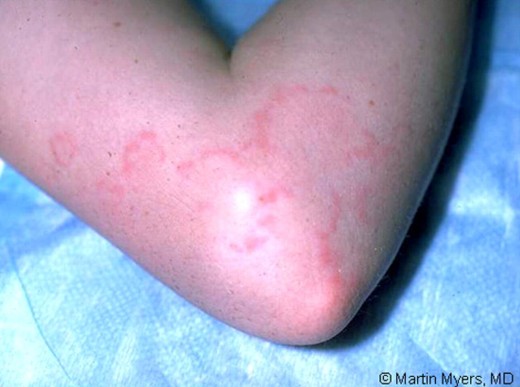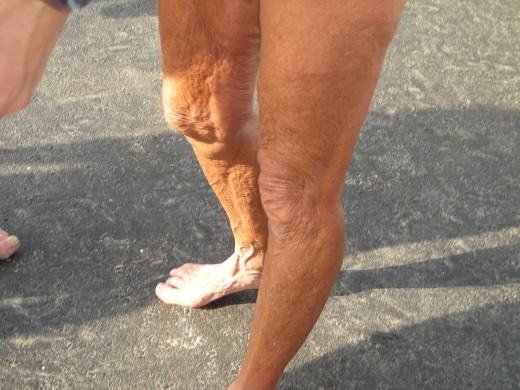Acute Rheumatic Fever: Clinical Significance Of Its Diagnosis As A Streptococcal Infection
Manifestations Of Acute Rheumatic Fever

Acute Rheumatic Fever
Clinically, rheumatic fever should be considered in all cases of prolonged fever in any developing country. Rapid pulse, arthritis, skin manifestations and carditis suggest the diagnosis.
Streptococcal infections may be demonstrable either by throat swab culture or by serological methods. Moderate neutrophil leucocytosis occurs in many cases.
Serodiagnosis: Several antibodies to streptococcal antigens have been identified
- Anti-steptolysin I titer (ASO)
- Anti-streptokinase (ASK)
- Anti-deoxyribonucelotidase B (Anti-DNAse B).
- Anti-nicotinamide adenine dinucleotidase (Anti-BADase).
- Anti- hyaluronidase (AH)
- Anti- streptozyme test (ASTZ).
Anto- streptolysin O titre has been widely accepted as one of the more easily available diagnostic tests and any value above 250 Todd units in adults and 333 Todd units in children is suggestive of a steptcoccocal infection. However, the diagnostic levels vary in different places and it is related to the prevalence of antibody levels in the local population. Anti-streptozyme test is a highly sensitive hemagglutination test.
Arthritis On The Knee

Acute Phase Reactants
These are laboratory tests which are helpful in the acute phase of the illness. Values of ESR and C reactive proteins are elevated. There may be neutrophil leucocytosis. The presence of carditis is suggested by the presence of electrocardiographic abnormalities which may show sinus tachycardia, ectopic beats, or first and second degress heart blocks. The voltage of QRS complexes islow; ST elevation and T inversion are seen in the presence of pericarditis. It should be remembered that in many cases with carditis, ECG may not show any abnormalities and hence a negative ECG does not rule out cardiac involvement. The American Heart Association has accepted the modified “Jone’s Criteria” (1965) for diagnosis which are relevant in the conditions of the developing countries as well. The major criteria denote the more specific lesions whereas the minor criteria are nonspecific. For the diagnosis of rheumatic fever, two major or one major and two minor criteria should be present. In any case, there should be evidence of previous streptococcal infection. In West African subjects, polyarthrialgia is also taken as a major criterion if supported by the evidence of streptococcal infection.
Jone’s Criteria (Revised)
Major Manifestations
| Minor Manifestations
|
|---|---|
Carditis
| Previous rheumatic fever or rheumatic heart disease
|
Polyarthritis
| fever
|
Chorea
| Acute phase reactants
|
Subcutaneous Nodules
| Prolongation of PR interval
|
Erythema marginatum
|
Differential Diagnosis Of Acute Rheumatic Fever
Acute rheumatic fever has to be distinguished from other forms of polyarthritis. The migratory nature and absence of residual deformity suggest rheumatic etiology. Also rheumatic heart disease has to be differentiated from congenital heart disease and other acquired heart diseases.
© 2014 Funom Theophilus Makama









